 IJmuiden Project - Fred Cottaar, José Verbeek, Maarten van Kleinwee & Mars Muusse
IJmuiden Project - Fred Cottaar, José Verbeek, Maarten van Kleinwee & Mars Muusse
(last update: January 01, 2023)
| back to INDEX |
| Y.ALB |
| NLA x.xxx.xxx |
| Herring Gull |
| female, pullus |
| ringed: June 29 2009 |
| Forteiland IJmuiden, - |
| Relations: |
| - |
| - |
Herring Gull (argenteus) Y.ALB 1CY-8CY, August 2009 - August 2016, IJmuiden, the Netherlands. Picture: Mars Muusse & Maarten van Kleinwee.
Ringed as pullus in breeding season 2009 at Forteiland, IJmuiden. Ringed by Fred Cottaar ringing team.
below: Herring Gull (argenteus) Y.ALB 8CY, August 30 2016, IJmuiden, the Netherlands (52.27N 04.33E).
P5/P8.

below: Herring Gull (argenteus) Y.ALB 8CY, April 09 2016, IJmuiden, the Netherlands (52.27N 04.33E).
below: Herring Gull (argenteus) Y.ALB 8CY, February 24 2016, IJmuiden, the Netherlands (52.27N 04.33E).
below: Herring Gull (argenteus) Y.ALB 8CY, February 19 2016, IJmuiden, the Netherlands (52.27N 04.33E).
below: Herring Gull (argenteus) Y.ALB 7CY, September 25 2015, IJmuiden, the Netherlands (52.27N 04.33E).
Complete moult: P7/-.

below: Herring Gull (argenteus) Y.ALB 7CY, September 20 2015, IJmuiden, the Netherlands (52.27N 04.33E).
Complete moult: P7/P10.


below: Herring Gull (argenteus) Y.ALB 7CY, September 03 2015, IJmuiden, the Netherlands (52.27N 04.33E).
Complete moult: P6/P9.


below: Herring Gull (argenteus) Y.ALB 7CY, August 18 2015, IJmuiden, the Netherlands (52.27N 04.33E).
Complete moult: P5/P8.

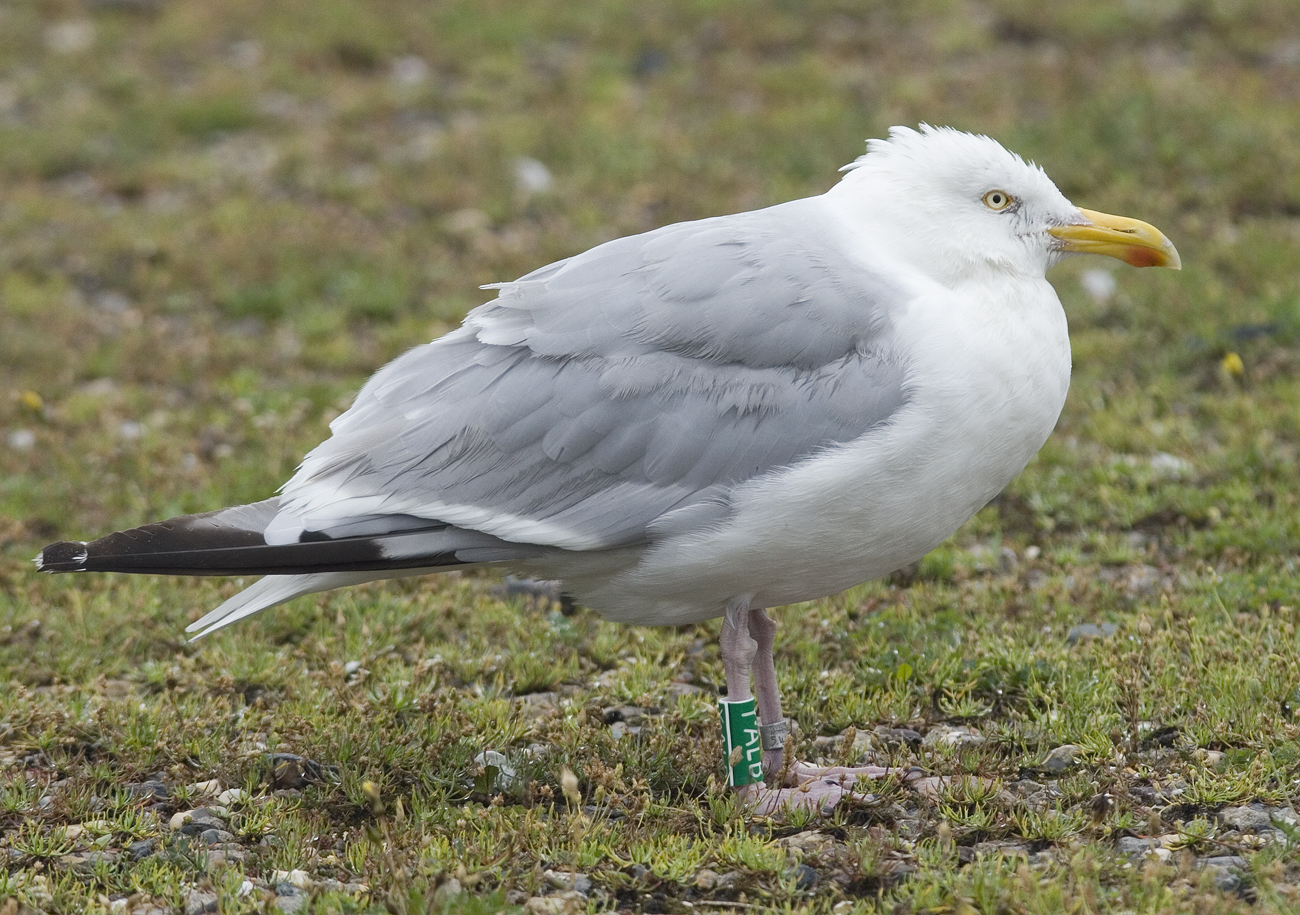
below: Herring Gull (argenteus) Y.ALB 7CY, March 16 2015, IJmuiden, the Netherlands.

below: Herring Gull (argenteus) Y.ALB 7CY, February 23 2015, IJmuiden, the Netherlands. Picture: Mars Muusse.

below: Herring Gull (argenteus) Y.ALB 7CY, February 16 2015, IJmuiden, the Netherlands. Picture: Mars Muusse.
Small bird, presumed female.

below: Herring Gull (argenteus) Y.ALB 5CY, September 22 2013, IJmuiden, the Netherlands. Picture: Maarten van Kleinwee.
P7/-.

below: Herring Gull (argenteus) Y.ALB 5CY, August 11 2013, IJmuiden, the Netherlands. Picture: Maarten van Kleinwee.
P5/P8. Note the full black band on P5.
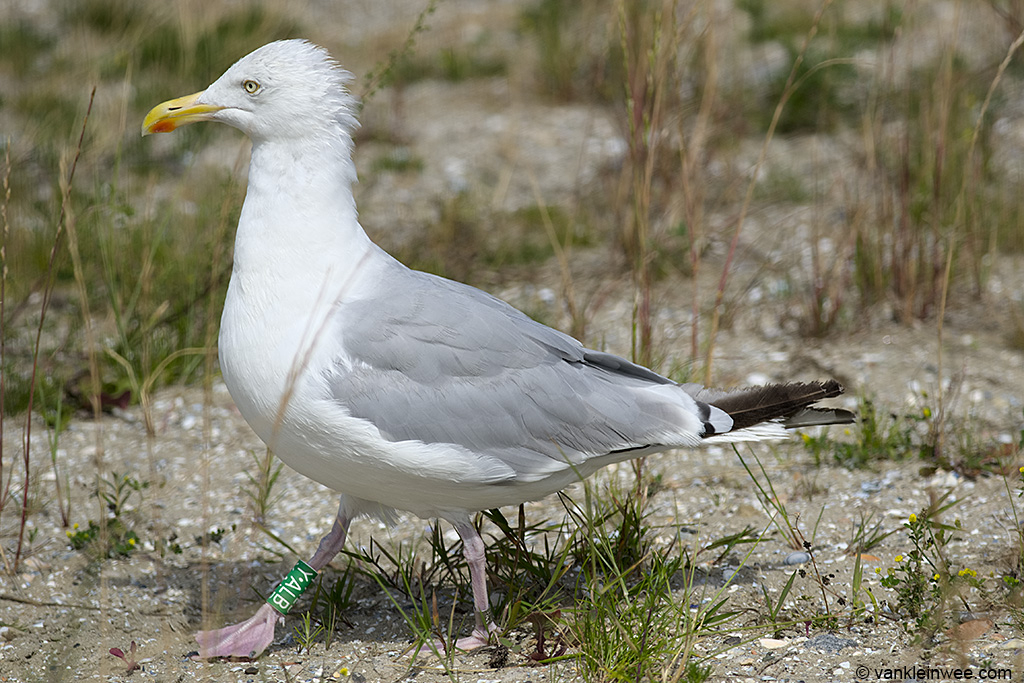

below: Herring Gull (argenteus) Y.ALB 3CY, October 30 2011, IJmuiden, the Netherlands. Pictures: Maarten van Kleinwee.
Typical third-calendar year European Herring Gull in third-winter (third-basic, third cycle) plumage. The fully grown primaries have very small primary tips. The tertials and most of the coverts are still predominantly brown. The head, neck and chest show dark streaks, the bill is mostly yellow with a black tip.

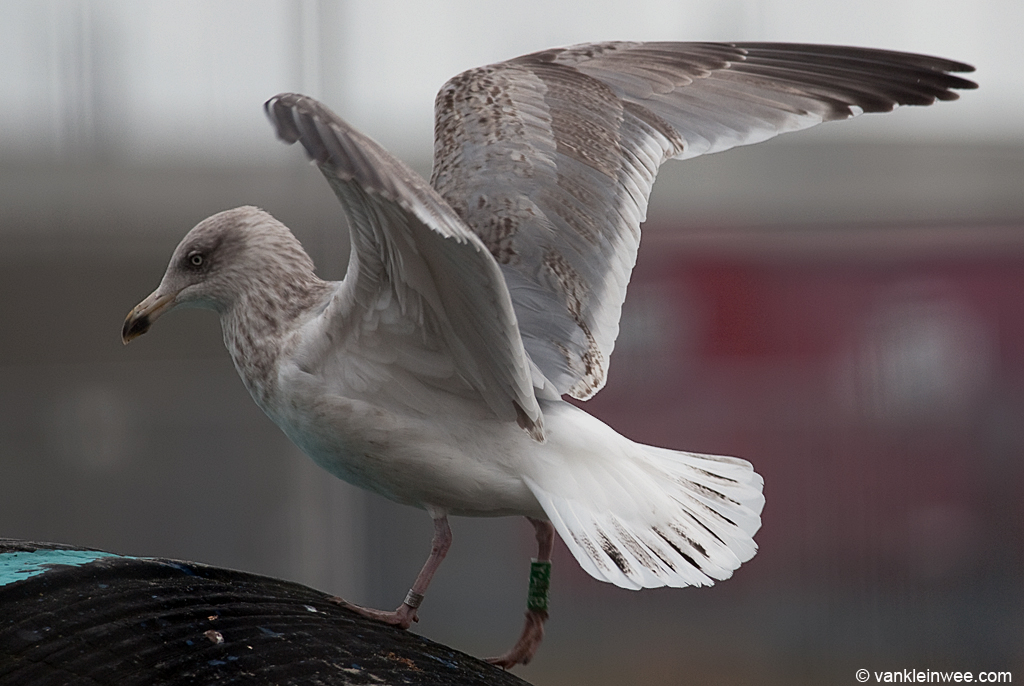
below: Herring Gull (argenteus) Y.ALB 3CY, October 21 2011, IJmuiden, the Netherlands.
Note pattern on inner primaries.

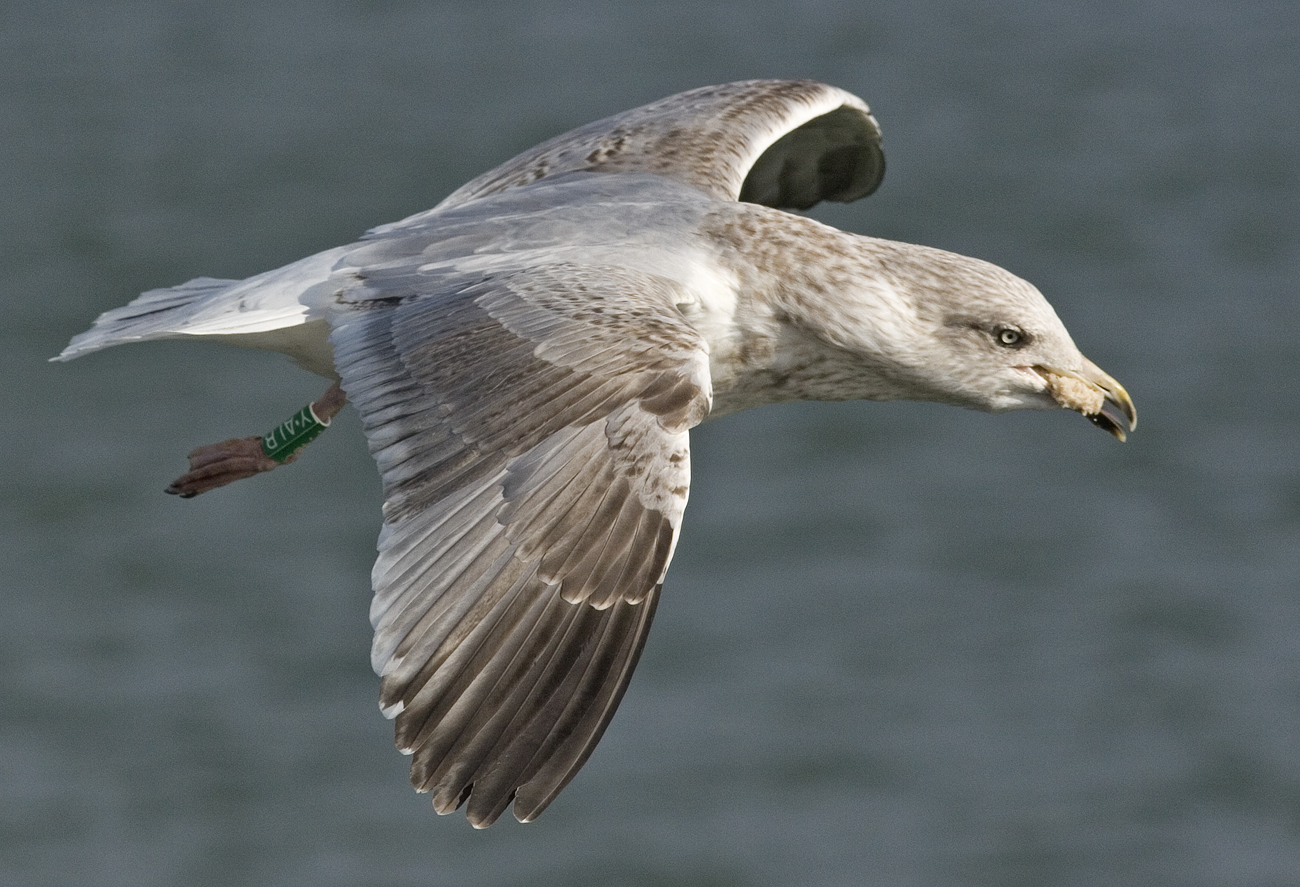

below: Herring Gull (argenteus) Y.ALB 3CY, March 28 2011, IJmuiden, the Netherlands.


below: Herring Gull (argenteus) Y.ALB 3CY, March 04 2011, IJmuiden, the Netherlands.

below: Herring Gull (argenteus) Y.ALB 3CY, January 05 2011, IJmuiden, the Netherlands.

below: Herring Gull (argenteus) Y.ALB 2CY, December 23 2010, IJmuiden, the Netherlands.
Bird showing pale iris, pale base of bill and typical checkered pattern of 2nd gen secondaries.


below: Herring Gull (argenteus) Y.ALB 2CY, September 09 2010, IJmuiden, the Netherlands. Picture: Mars Muusse.
P8 fully grown.


below: Herring Gull (argenteus) Y.ALB 2CY, June 13 2010, IJmuiden, the Netherlands. Picture: Maarten van Kleinwee.
Note the very dark lower scapulars. The first-generation lesser, median, and greater coverts are now heavily worn and abraded; down to the shaft at the feather tip, exposing the underlying feathers. Tertial #1 and the innermost greater covert have been replaced and are growing. The first-generation tertials, primaries and tail feathers now appear as a pale, dull brown. The flanks and lower body are spotted dark brown, the iris is dark, the bill shows an extended pink base and a clear tip. In flight, this gull showed new P1, P2, and P3 primaries and a missing P4.
Moultscore: 16 (P1=5, P2=5, P3=5, P4=1, P5=0, P6=0, P7=0, P8=0, P9=0, P10=0).
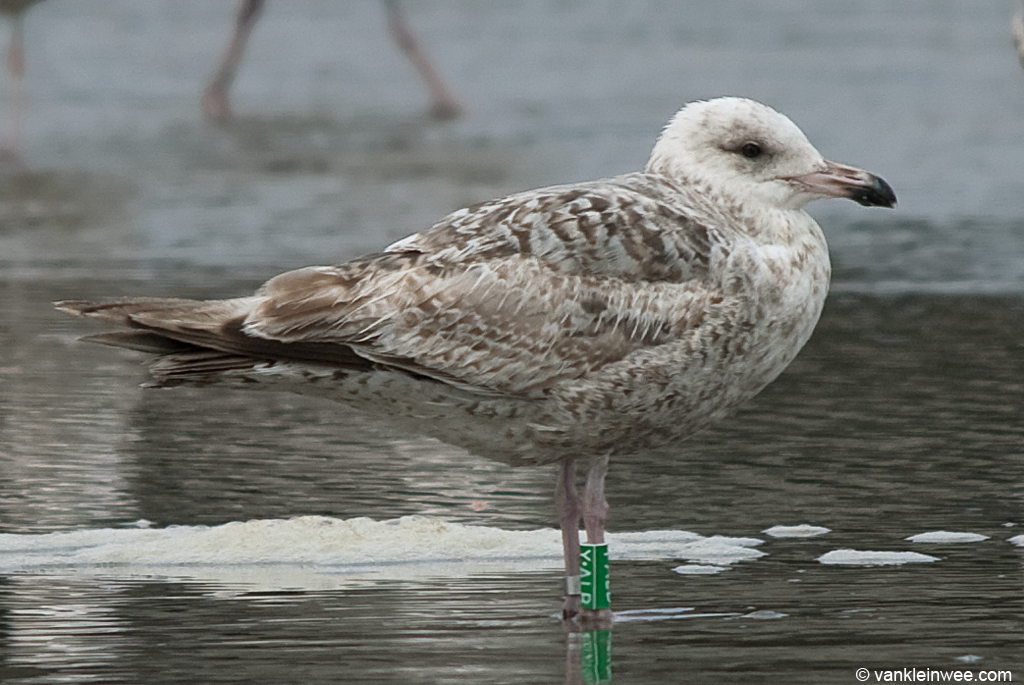
below: Herring Gull (argenteus) Y.ALB 1CY, December 18 2009, IJmuiden, the Netherlands. Picture: Mars Muusse.
All scaps replaced for 2nd gen: US & LS 100% 2g.


below: Herring Gull (argenteus) Y.ALB 1CY, August 31 2009, IJmuiden, the Netherlands. Picture: Mars Muusse.
Local bird from Ijmuiden. A few replaced scapulars, otherwise in complete juvenile plumage.
The partial autumn moult in argenteus (moult from juvenile plumage into so-called "first winter" plumage) includes the body and head feathers. This moult starts as soon as the nest is abandoned (late June) and continues until January. In general, the head turns paler on throat and forehead. The breast will turn paler as well. The feathers on belly and vent will still be juvenile in most 1cy argenteus by November. From July onwards, the mantle and upper scapulars are moulted to second generation feathers, showing an anchor pattern and a dark base. The lowest row of scapulars are still juvenile by March in most 2cy birds (contra e.g. michahellis). The notched pattern of the juvenile scapulars is repeated on the juvenile lesser, lower lesser and median coverts, although the medians have paler centres. The juvenile greater coverts show a 'piano-key' pattern; on the outer greater coverts as well. The tertials have an obvious notched pale fringe and transversal bar.
The juvenile wing-coverts, rectrices and remiges start to bleach and show wear in the fringes from September onwards. The secondaries, primaries and primary coverts are dark with a small white tip, but the juvenile inner primaries show an obvious pale window, prominent from below and above. The under-wing is rather uniform grey-brown patterned. The tail has a broad sub-terminal band and isolated dark bars on the basal half. The iris is dark, the bill is blackish, sometimes with a paler base, and the legs are flesh-pink.



